This post has been sponsored by San Felice. All opinions expressed are my own. The following message is intended for those 21+.
San Felice, a historic Tuscan winery, and a longtime friend of Living the Gourmet, is launching their Vitiarium Collection, which celebrates and embodies the soul of the Tuscan Estate. This collection includes four wines that represent the culmination of San Felice’s Vitiarium Project, a groundbreaking sustainability initiative. Launched in the 1980s, the Vitiarium Project revived near extinct local grape varieties, and broke ground on a 1.6 hectare vineyard preserving local viticultural biodiversity, reflecting San Felice's commitment to both traditional practices and scientific research, in collaboration with the University of Florence.
And today we’re taking a look at the Vitiarium Collection’s 2022 Borgo Chianti Classico.
First up, we’ll be talking a little about Tuscany’s Chianti wine region and what makes it so special. After that, we’ll be reviewing the Chianti itself, before discussing pairings to help you get the most out of this bottle.
Featuring sun-kissed hillsides and fertile valleys, Tuscany's landscape provides one of the most ideal environments for the cultivation of grapes. Coupled with a combination of Mediterranean climate, limestone-rich soil, and cooling coastal influences from the Tyrrhenian Sea – I would be hard pressed to tailor make a better terroir for grapes.
Tuscany is, however, perhaps best known as the home of the Sangiovese grape, and the beloved Chianti that the grape produces – and that’s what we’re looking at today.
Now, let’s get to it.
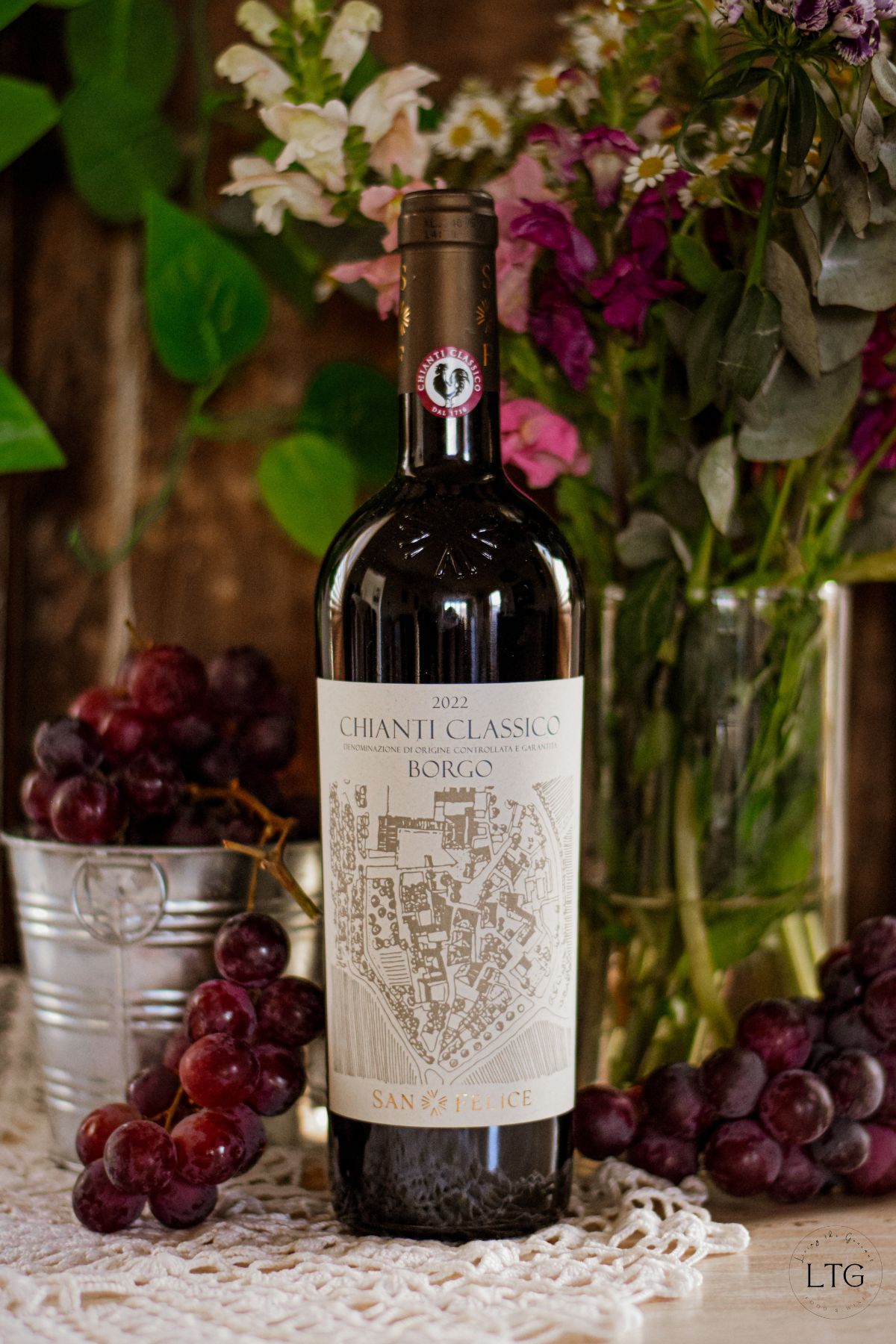
The Where – Tuscany (Chianti DOCG), Italy
Tuscany is home to some of the world’s most renowned wine regions. Bolgheri gave the world ultra-high quality known as “Super Tuscans.” Carmignano, one of Tuscany’s oldest wine regions, graced our palates with Snagiovese and Cabernet Suavignon blends with sublime aging potential. Brunello di Montalcino produces some of Italy’s most sought after wines in the form of Sangiovese vintages known for their complexity and depth, while Vino Nobile di Montepulciano has achieved renowned producing wines from Prugnolo Gentile, a Sangiovese clone, well regarded for its elegance and balance.
The Chianti region, and its namesake wines, however, are among the top tier of Tuscany’s wine industry. Produced from Sangiovese grapes, Chianti is recognized for its assorted cherry aromas and flavors, along with pleasantly contrasting savory notes, rich acidity, and full tannins.
The first Chianti wine zone dates back over three hundred years to 1716 courtesy of Grand Duke Cosimo Medici. Recognizably ‘modern’ Chianti, the ‘style’ or blending of Sangiovese that we all know and love today, dates back to the 1800s, courtesy of Barone Ricasoli of the Castello di Brolio winery.
Outside of the Chianti DOCG, Tuscany is divided across a whopping forty-one DOCs and 11 DOCGs, Italy’s regional classification system, which regulates how and where wines are made. Aside from production methods and geography, this classification system also sets rigid quality standards, including but not limited to standardized taste testing.
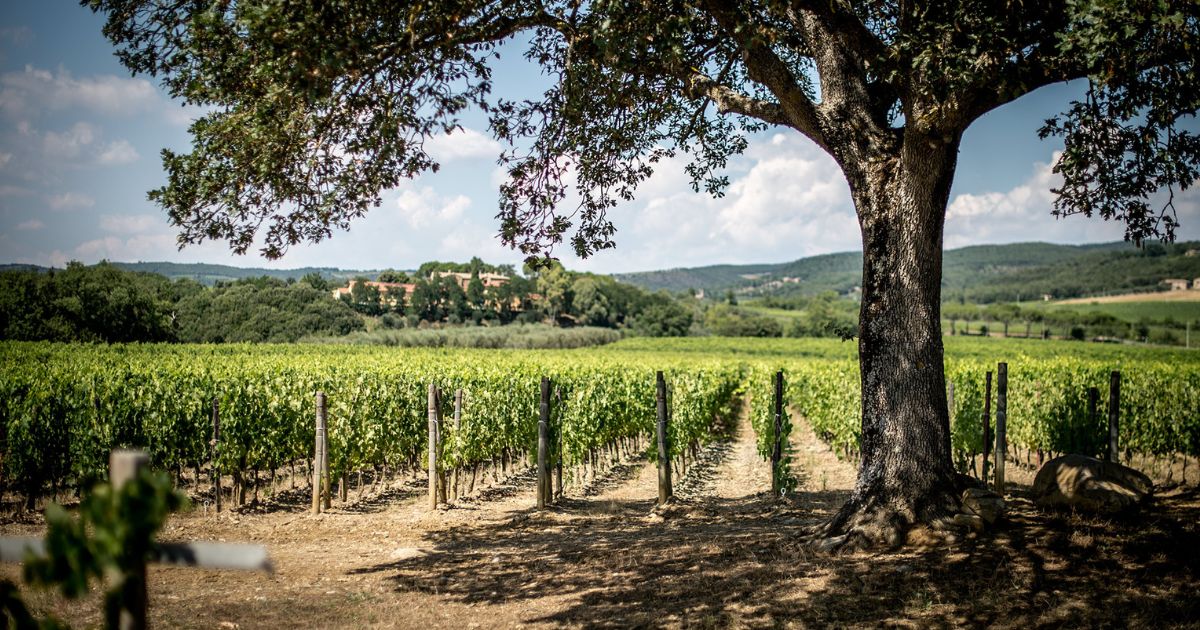
However, despite the literally dozens of specified production areas and methods into which Tuscany is divided, the bedrock of Tuscan winemaking is a single varietal – Sangiovese. Sangiovese so dominates the region that it is almost impossible to talk about Tuscan winemaking without giving mention to the grape that produces the dry red wines for which Tuscany is famous. Prized for its high acid, ‘pleasantly firm’ tannins and balance, a quality wine based on Sangiovese will evoke images of ripe dark cherries and black stonefruit, perforated with stark herbal notes. Chianti, Vino Nobile di Montepulciano, and Brunello di Montalcino (all of which we’ve reviewed here on Living the Gourmet), are just a few of the world-renowned wines produced from Sangiovese.
However, Sangiovese is assuredly ‘not’ the beginning and end of the story of Tuscan winemaking. For example, the 1970s saw the rise of ‘Super Tuscans,’ an unofficial term used to describe several high-quality Tuscan wines that were – for one reason or another – excluded from receiving DOC or DOCG status by breaking traditional Italian winemaking norms. Regardless of local labeling, a number of these wines achieved critical acclaim, as well as commercial success, and ended up becoming ‘cult wines’ that commanded high prices. Over the ensuing decades some of these ‘Super Tuscans’ were granted DOC or DOCG status – although it can be argued that such status detracted from their ‘cult’ mystique as ‘rogue labels.’ Aside from the controversial ‘Super Tuscans,’ other wines have also seen success across Tuscany, such as Syrah, Merlot, and Cabernet Sauvignon.
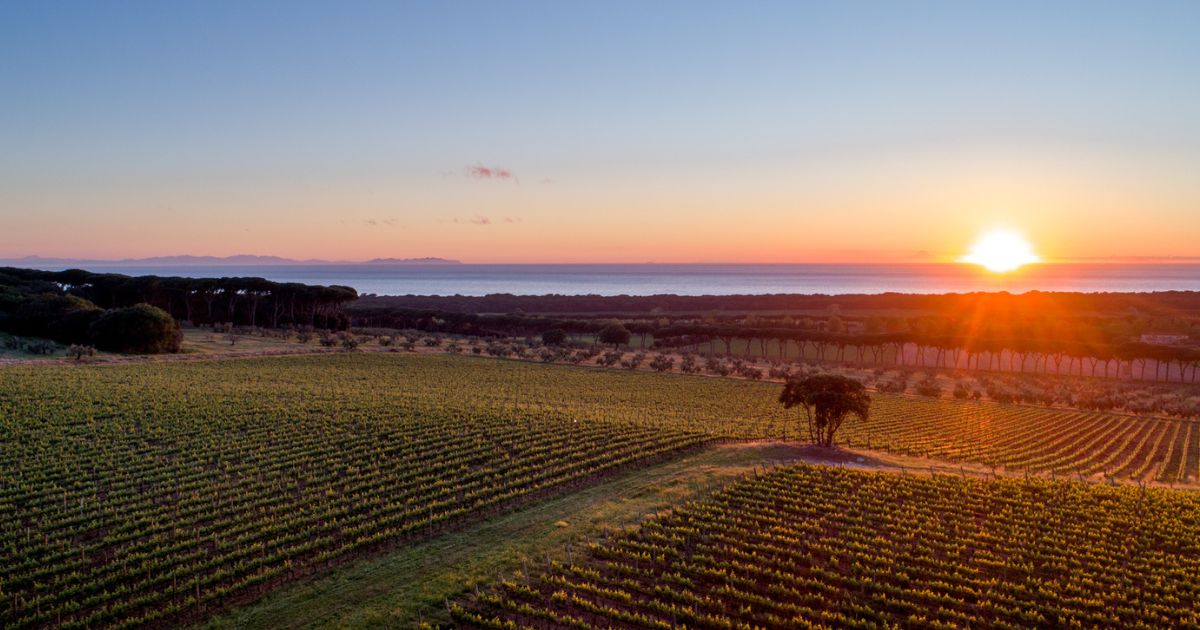
Tight regulations and quality standards aside, climate is perhaps the foremost factor in Tuscany’s success. The region’s warm and temperate coastline is flanked by inland hillsides and mountains, which help temper the region’s searing summers, which in turn contributes to increased temperature variation. This temperature variation between the hills, mountains, and warm coastline help balance the sugars and acidity of the region’s grapes. Sangiovese performs best when it receives maximum direct sunlight, and as such the hilly terrain of the region is almost tailormade for this grape, with the majority of area’s vineyards being planted at elevations of between some five-hundred and sixteen-hundred feet. This higher elevation further increases temperature variance, which further increases the balance in sugar and acidity.
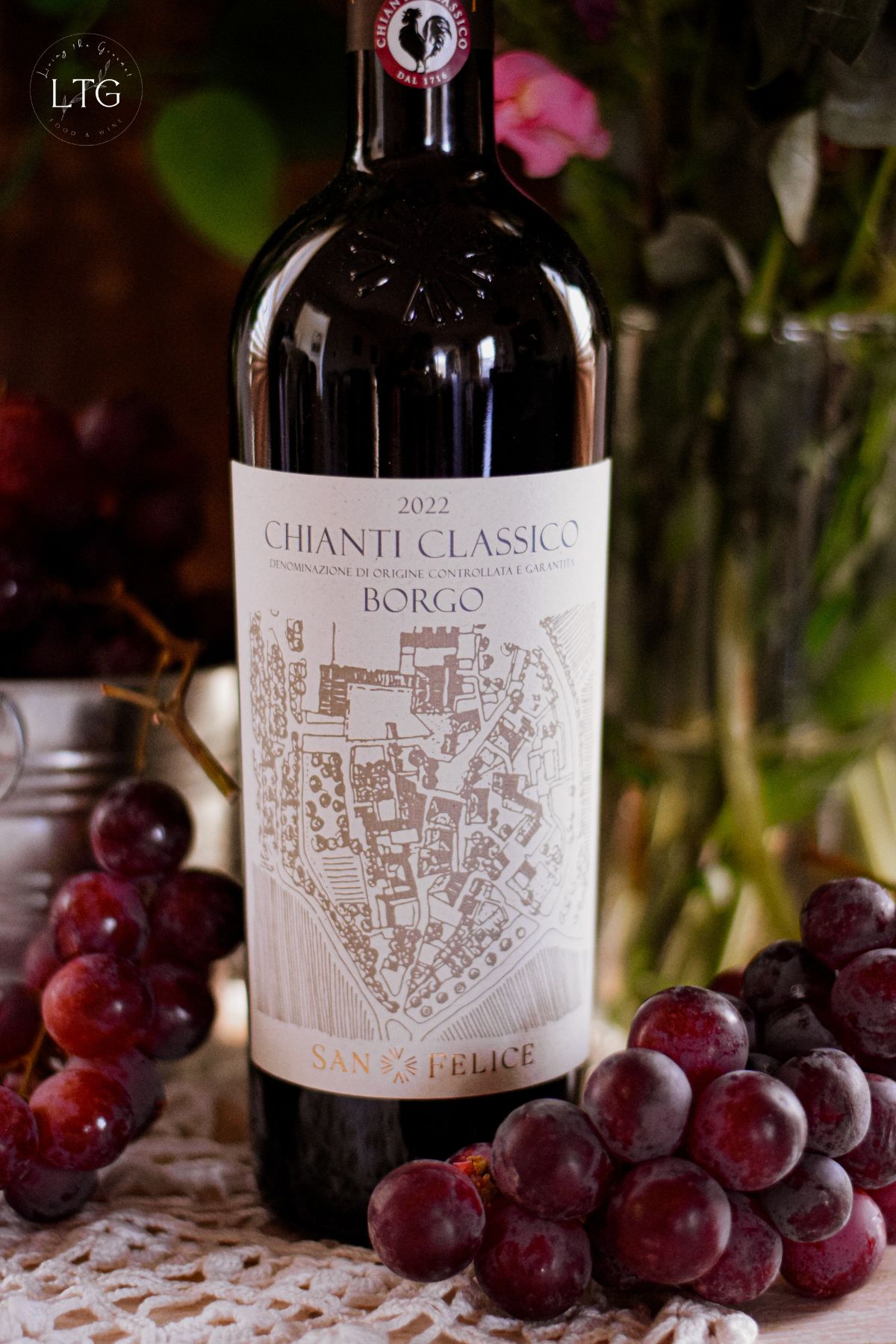
The Bottle – A Showcase
Today we’re reviewing a 2022 Borgo Chianti Classico courtesy of San Felice, part of their newly launched Vitiarium Collection. From its label you can see how this bottle is intended to capture the history of the DOCG, immersing the viewer in each stone of each alleyway, while capturing the panoramic view of the region, reminiscent of an old-time postcard. I felt myself somehow invited to plunge into past centuries and discover a heritage of immeasurable value.
Tasting and Aromatics – The Review
The Chianti Classico Borgo: Introduces itself with a dark ruby hue, and aromas of dark red cherry and raspberry, with just a hint of tart cranberry punctuating the bouquet. Deeper into the glass, the aromatics mature with earthy elements and licorice. On the palate, the aromatics largely carry over, with deep, ripe red fruit notes at the fore, framed in a lively acidity. The wine ends on a lasting finish. Very enjoyable.
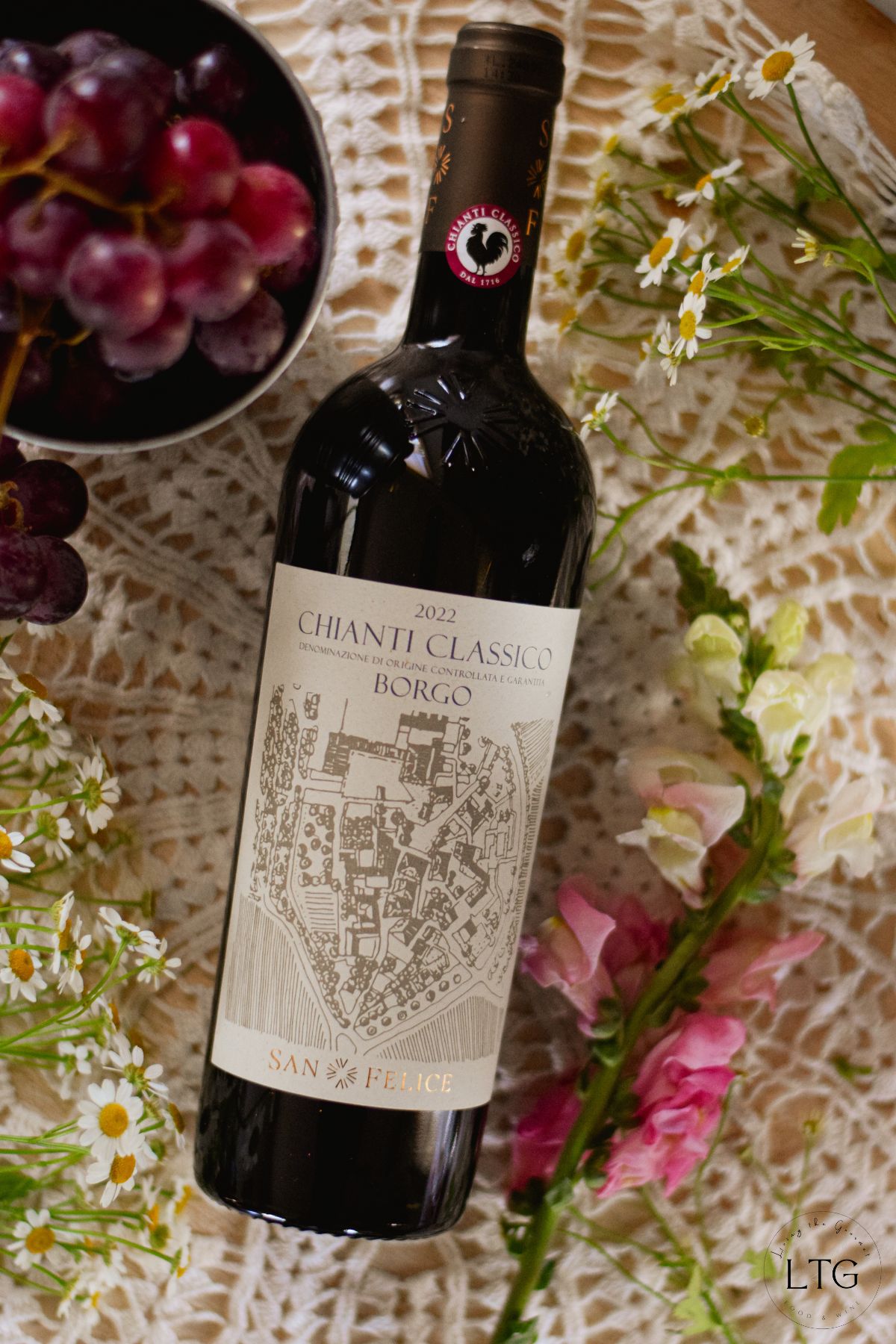
Pairing Today’s Chianti Classico
Chianti Classico is a delicious pairing for heavier Italian fare and red meats. Here are some of my go-to pairings.
- Grilled Steaks: Chianti has had lasting love affair with grilled steaks. The two are a match made in heaven due to Chianti’s robust tannins and acidity. In addition, the wine's savory and earthy notes, often with hints of tobacco and leather, deliciously complement the rich, smoky flavors of a well-seared steak.
- Red Sauces: We’re talking pasta with rich tomato-based sauces, and a hint of spice such as spaghetti marinara or penne arrabbiata. Throw in some meatballs and sausages and you’ve got a delicious pairing.
- Red Meat: Grilled or roasted red meats, such as steak, lamb chops, and boar, are all delicious pairings with a Chianti Classic. Consider preparing these meats thoroughly herbed with plenty of garlic.
- Grilled Sausages: Italian sausages, with their mix of spices and herbs, harmonize beautifully with a good Chianti. Throw in some peppers, onions, and bit of spice, and you’re good to go.
- Tuscan Cuisine: Italian sausages, with their mix of spices and herbs, harmonize beautifully with a good Chianti. Throw in some peppers, onions, and bit of spice, and you’re good to go.
- Risotto: Creamy risotto, with plenty of mozzarella, preferably layered with mushrooms or sausage would be delicious.
And that’s our review of San Felice’s Chianti Classico Borgo 2022, and don’t forget to check out their new Vitiarium Collection.
If you enjoyed today’s article, tried the wine, or have any questions or suggestions be sure to let us know in the comments below. We always love hearing from you!
Cheers!
0
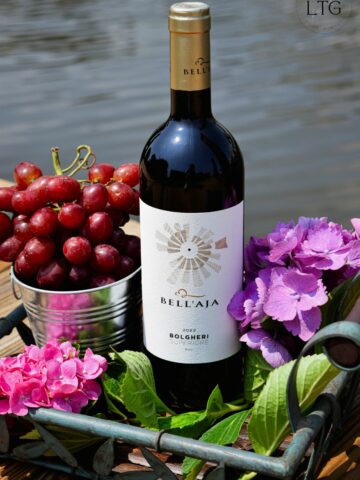



Leave a Comment